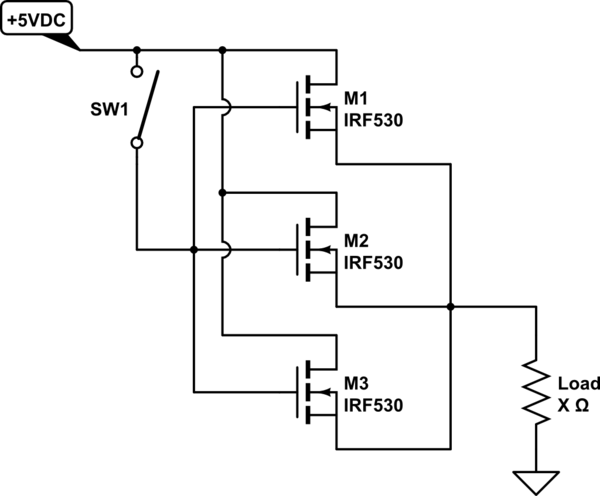MOSFETs are a bit unusual, in that if you connect several of them in parallel, they share the load quite well. Essentially, when you turn on the transistor, each one will have a slightly different on-resistance and a slightly different current. The ones carrying more current will heat up more, and increase their on-resistance. That then redistributes the current a bit. Provided the switching is slow enough for that heating to happen, it gives a natural load-balancing effect.
Now, the natural load-balancing isn't perfect. You'll still end up with some imbalance. How much will depend on how well matched the transistors are. Several transistors on one die will be better than separate transistors, and transistors of the same age, from the same batch, or which have been tested and matched up with a similar one will help. But as a very rough number, I'd expect you to be able to switch about 2.5A with three 1A MOSFETs. In a real circuit, it would be wise to look at the manufacturer's datasheets and application notes to see what they recommend.
Also, that circuit is not quite what you want. You'd be better off using the N-type MOSFETs for low-side switching. Or, if you want to stick with high-side switching, get some P-type MOSFETs. You will also need an appropriately placed resistor to make sure the gates are not floating when the switch is open.




